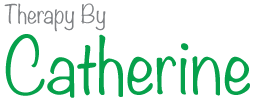Bullying in Families
 Bullying is a topic that frequently comes up in the news these days. It truly is a social problem that causes lasting damage for both individuals and the larger society. It can lead to health problems, lost productivity at work, difficulty in building strong family units and even a shorter life span.
Bullying is a topic that frequently comes up in the news these days. It truly is a social problem that causes lasting damage for both individuals and the larger society. It can lead to health problems, lost productivity at work, difficulty in building strong family units and even a shorter life span.
It has always happened but it was not always understood to be something that society could and should do something about. I am thankful that the media has brought it out of the closet and has helped turn popular opinion around about how inevitable bullying is. There is always more work to do. For example, it is not always recognized that bullying can occur in families, as well.
Bullying can occur in families for different reasons such as a poor relationship or domestic violence between parents, an insecure parent, a parent who had poor parenting or no parenting at all while growing up, personality disorders on the part of the parent or a myriad of other circumstances. One of the big problems of when a parent bullies is that the child is not equipped developmentally or emotionally to stand up for herself/himself yet. It can take years for anyone to learn to stand up to bullies, set healthy boundaries and know what to say to a bully. When it is in your own family, you don’t have much distance from it and no safe place to go. A bullying parent can also teach other children in the family to bully by aligning with them to bully a particularly needy or independent child. Children can bully each other when there is no other outlet seen for their frustrations.
A therapist can be a healthy influence to intervene when this is happening in a family with young children if therapy is sought out by the family. A therapist can also help years after that child has grown up and is seeing that her/his capacity to form loving and lasting relationships is damaged.
My focus in working with you is helping you come up with strategies and a plan for how to take care of yourself in practical ways, working with strengthening attachments to important people in your life as well as helping you heal damaged attachments internally. I use effective methods to help you efficiently and quickly heal those damaged emotional bonds. One is called EMDR, eye movement desensitization and reprocessing, a method you can control yourself. Another is simply emotionally sensitive attachment focused therapy. In families and with couples, I use attachment focused Emotionally Focused Therapy and practical, helpful tips on how to view things or change things.
- People need to be taught how to manage their feelings.
a. People who don’t know how to manage their feelings tend to discharge them through other people via bullying or complaining. This can be especially hard on children, teaching them that their responsibility is to take care of their parents’ feelings and that they need to take on other’s anger and irritation. - Communication skills are a wonderful tool by which you can protect yourself.
a. If someone is agitated and yelling at you, anyone would automatically want to yell back, escalating the interaction. If you use “I messages” and calm, direct communication, both people tend to de-escalate and are able to think again. You can take yourself out of the argument to calm down before coming back and talking if you need to. - Learning to recognize when you are in fight or flight mode and when you are in a calm, relaxed mode and learn that you can create a calm and relaxed mode on cue.
- Focus on yourself and your self care at all times.
a. The number one thing to disappear first in a dysfunctional or bullying family is self care, especially for the one who is bullied. This dynamic is similar in families troubled by addiction or mental illness, as well.
Here are some other good articles on bullying in families if you are interested:
5 Ways to Cope with Family Bullies
My Family Is a Bully: Bullying Within the Family
Catherine
